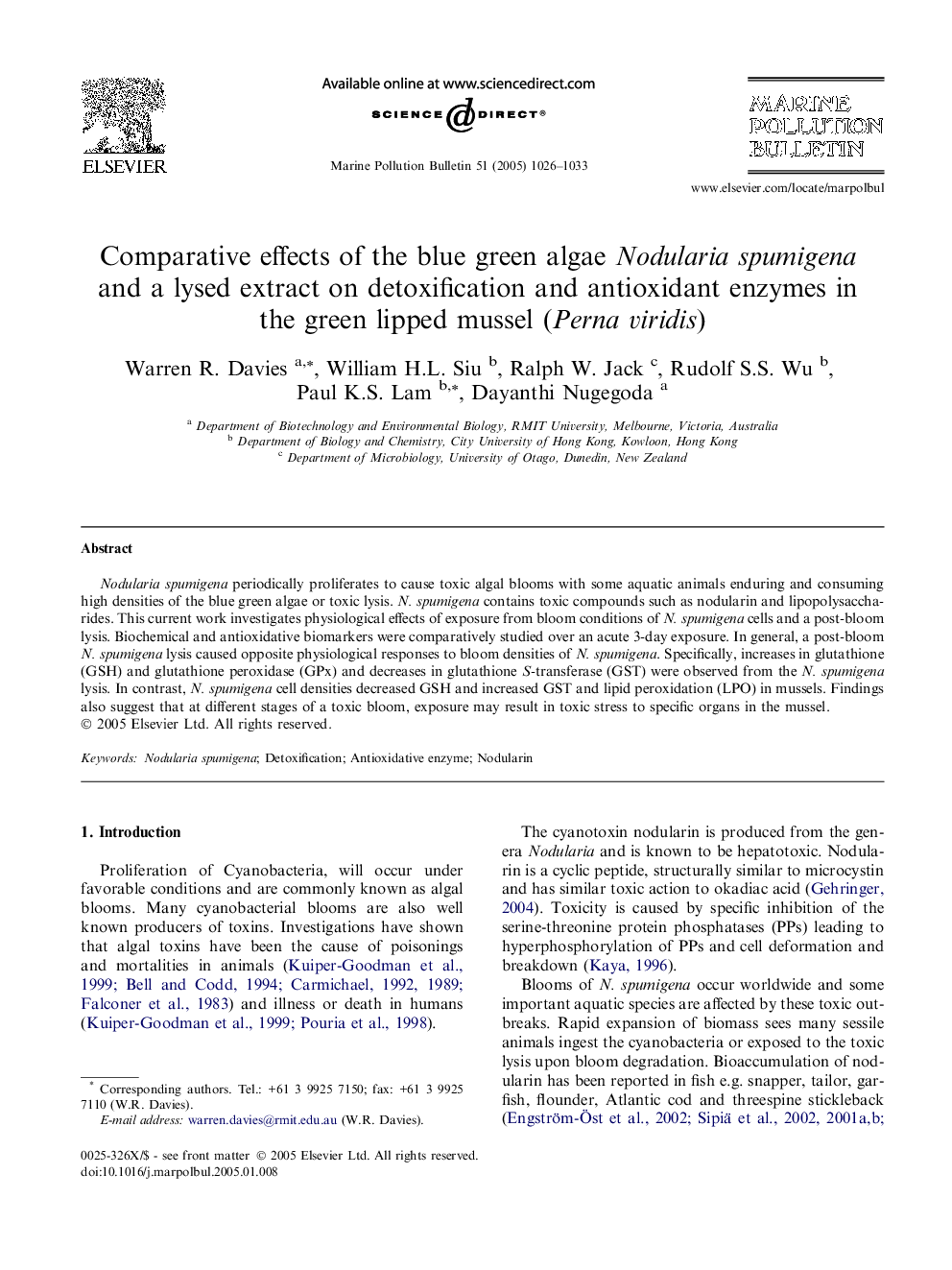| Article ID | Journal | Published Year | Pages | File Type |
|---|---|---|---|---|
| 9465846 | Marine Pollution Bulletin | 2005 | 8 Pages |
Abstract
Nodularia spumigena periodically proliferates to cause toxic algal blooms with some aquatic animals enduring and consuming high densities of the blue green algae or toxic lysis. N. spumigena contains toxic compounds such as nodularin and lipopolysaccharides. This current work investigates physiological effects of exposure from bloom conditions of N. spumigena cells and a post-bloom lysis. Biochemical and antioxidative biomarkers were comparatively studied over an acute 3-day exposure. In general, a post-bloom N. spumigena lysis caused opposite physiological responses to bloom densities of N. spumigena. Specifically, increases in glutathione (GSH) and glutathione peroxidase (GPx) and decreases in glutathione S-transferase (GST) were observed from the N. spumigena lysis. In contrast, N. spumigena cell densities decreased GSH and increased GST and lipid peroxidation (LPO) in mussels. Findings also suggest that at different stages of a toxic bloom, exposure may result in toxic stress to specific organs in the mussel.
Related Topics
Physical Sciences and Engineering
Earth and Planetary Sciences
Oceanography
Authors
Warren R. Davies, William H.L. Siu, Ralph W. Jack, Rudolf S.S. Wu, Paul K.S. Lam, Dayanthi Nugegoda,
